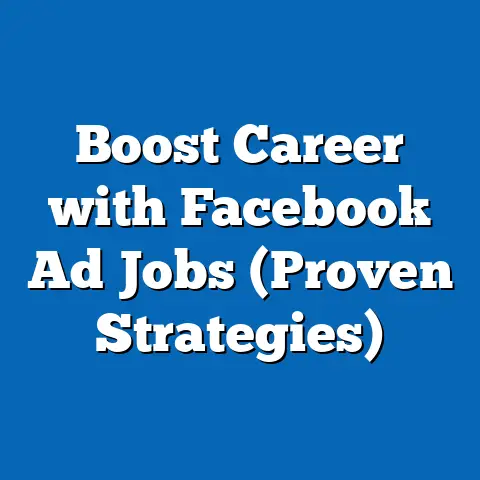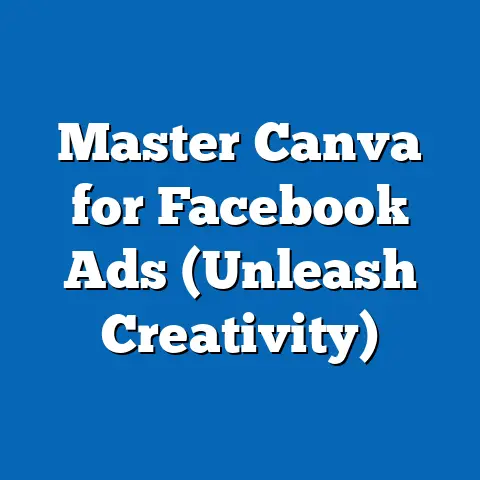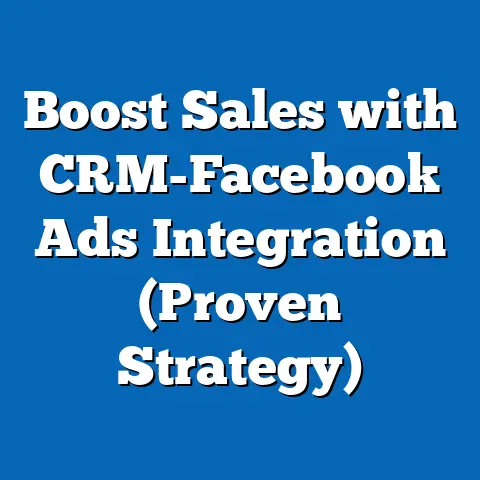Stop Annoying Ads: Control Facebook Video Settings (Expert Guide)
Stop Annoying Ads: Control Facebook Video Settings (Expert Guide)
In an era where digital consumption shapes much of our daily lives, the constant barrage of advertisements, particularly video ads on platforms like Facebook, has become a significant point of frustration for users worldwide. This annoyance is not just a trivial inconvenience; it reflects broader societal shifts toward prioritizing user autonomy, mental well-being, and sustainable digital environments. As we delve into the mechanisms of controlling video ad settings on Facebook, it is critical to frame this discussion within the context of sustainability—both in terms of individual user experience and the broader digital ecosystem.
Sustainability in the digital realm encompasses more than just environmental impact; it includes fostering online spaces that respect user time, attention, and emotional health. The proliferation of intrusive ads often undermines this balance, contributing to digital fatigue and dissatisfaction. By exploring how users can control video ad settings on Facebook, this article aims to empower individuals to reclaim agency over their online interactions while highlighting the societal implications of unchecked advertising practices.
Sustainability in the Digital Age: Defining Characteristics and Importance
Sustainability, traditionally associated with environmental conservation, has evolved to include the responsible use of digital resources and the preservation of user well-being in online spaces. In the context of social media platforms like Facebook, digital sustainability refers to creating an ecosystem where users are not overwhelmed by intrusive content, such as autoplay video ads, that disrupt their experience. Key characteristics of sustainable digital environments include transparency in advertising practices, user control over content exposure, and minimal psychological strain from constant interruptions.
The importance of digital sustainability cannot be overstated. Studies have shown that excessive exposure to advertisements can lead to “ad fatigue,” where users become desensitized to marketing messages, ultimately reducing their effectiveness for businesses while increasing annoyance for consumers. According to a 2022 survey by Statista, nearly 74% of global internet users reported being irritated by irrelevant or overly frequent online ads, highlighting a pressing need for platforms to prioritize user preferences over aggressive monetization strategies.
Moreover, digital sustainability ties into mental health concerns. The constant interruption of video ads, often autoplaying with sound, can contribute to stress and reduced attention spans, particularly among younger users who spend significant time on social media. By advocating for control over such settings, we align with broader societal goals of fostering healthier, more intentional online interactions—a cornerstone of sustainable digital culture.
Historical Context: The Evolution of Digital Advertising and User Pushback
To understand the current landscape of video ads on platforms like Facebook, it is essential to trace the evolution of digital advertising. In the early 2000s, online ads were primarily static banners or pop-ups, often easy to ignore or close. However, as social media platforms emerged, particularly with Facebook’s launch in 2004, advertising became more integrated into user experiences, leveraging personal data for targeted campaigns.
By the late 2010s, video ads had become a dominant format, driven by higher engagement rates and the platform’s shift toward multimedia content. Autoplay videos, introduced by Facebook in 2013, were initially celebrated by marketers for capturing attention but soon became a source of irritation for users who felt ambushed by unsolicited content. This marked a turning point in user sentiment, with growing calls for greater control over ad exposure.
Historically, significant events like the 2018 Cambridge Analytica scandal, which exposed Facebook’s misuse of user data for targeted advertising, further eroded trust in the platform. This event catalyzed a broader movement toward digital privacy and user empowerment, with many advocating for tools to limit ad intrusiveness. The pushback against aggressive advertising reflects a cultural shift toward valuing personal agency in the digital realm—an ethos that underpins the drive to control video settings today.
Generational dynamics also play a role in this historical context. Baby Boomers (born 1946–1964), who entered the digital world later in life, often view ads with skepticism, shaped by traditional media experiences where interruptions were less frequent. In contrast, Millennials (born 1981–1996) and Gen Z (born 1997–2012), having grown up with the internet, are more tech-savvy but also more vocal about digital fatigue, demanding customizable online experiences. These generational differences highlight the diverse motivations behind seeking control over ad settings.
Societal Implications: Why Controlling Video Ads Matters
The societal implications of unchecked video advertising on platforms like Facebook are multifaceted, touching on issues of mental health, economic equity, and cultural values. At the individual level, constant exposure to ads can disrupt focus and contribute to information overload, a phenomenon well-documented in psychological research. A 2021 study from the University of Southern California found that frequent digital interruptions, including autoplay ads, correlate with heightened anxiety and decreased productivity among users.
Economically, the over-reliance on intrusive ads raises questions about the sustainability of current social media business models. While platforms like Facebook generate significant revenue from advertising—$114.9 billion in 2022, according to Meta’s annual report—this approach risks alienating users over time, potentially driving them toward ad-free or subscription-based alternatives. This tension underscores the need for a balanced approach that prioritizes user experience alongside profitability.
Culturally, the prevalence of video ads reflects broader societal attitudes toward consumerism and attention as commodities. Younger generations, particularly Gen Z, are increasingly critical of overt marketing tactics, valuing authenticity and transparency over aggressive sales pitches. This shift suggests that platforms must adapt to changing cultural norms by offering more user control, aligning with values of autonomy and sustainability.
Finally, the digital divide introduces another layer of societal impact. Not all users have equal access to the knowledge or tools needed to adjust ad settings, often leaving older or less tech-savvy individuals more vulnerable to intrusive content. Addressing this disparity is crucial for ensuring that digital sustainability benefits all demographics, not just the digitally literate.
Generational Perspectives on Digital Ads and Control
Understanding how different generations perceive and interact with digital ads provides valuable insight into the broader push for control over video settings. Each cohort’s unique historical and cultural context shapes their attitudes toward advertising and technology, influencing their priorities and behaviors online.
Baby Boomers (1946–1964)
Baby Boomers, who witnessed the transition from analog to digital media, often approach online ads with a mix of curiosity and wariness. Having grown up with television commercials that aired at predictable intervals, many find the unpredictability of autoplay video ads jarring. While some Boomers may lack the technical know-how to adjust settings, others are motivated to learn as a means of maintaining control over their digital spaces.
A 2020 Pew Research Center report noted that 68% of Boomers use Facebook, often for staying connected with family, but many express frustration with irrelevant ads. Their primary concern is often privacy rather than ad frequency, reflecting a generational emphasis on personal security shaped by events like the Cold War and early internet scams. For Boomers, controlling video ads is less about customization and more about minimizing perceived intrusions.
Generation X (1965–1980)
Gen X, often described as the “latchkey generation,” grew up during the rise of personal computing and early internet adoption. They are generally pragmatic about technology, viewing it as a tool rather than a lifestyle. This generation tends to tolerate ads as a necessary trade-off for free content but appreciates options to limit disruptions.
According to a 2022 Nielsen study, Gen X users are more likely to engage with ads if they are relevant, but they also value efficiency, often seeking quick ways to mute or skip video content. Their historical context—marked by economic recessions and the dot-com bubble—has fostered a no-nonsense attitude toward digital excess, making them advocates for streamlined online experiences.
Millennials (1981–1996)
Millennials, the first true digital natives, have a complex relationship with online advertising. Having come of age during the social media boom, they are accustomed to targeted ads but are also critical of manipulative tactics. This generation values personalization and often uses ad blockers or privacy tools to curate their online environment.
A 2021 Deloitte survey found that 62% of Millennials are willing to pay for ad-free experiences, reflecting a generational shift toward prioritizing quality over cost. Shaped by events like the 2008 financial crisis, Millennials often seek value and authenticity in digital interactions, pushing back against ads that feel exploitative. For them, controlling video settings is both a practical necessity and a statement of agency.
Generation Z (1997–2012)
Gen Z, born into a fully digital world, is perhaps the most vocal about digital fatigue and ad intrusiveness. Raised with smartphones and social media, they are hyper-aware of data privacy issues and often view ads with skepticism. Their cultural touchstones, including movements like #DeleteFacebook, reflect a broader distrust of corporate overreach.
Research from Morning Consult in 2023 indicates that 79% of Gen Z users actively customize their social media settings to limit ads, far surpassing other generations. They prioritize mental health and digital minimalism, often gravitating toward platforms like TikTok that offer more organic content. For Gen Z, controlling video ads is a non-negotiable aspect of maintaining a sustainable online presence.
Common Threads and Diversity Within Generations
While generational trends provide a useful framework, it is critical to acknowledge the diversity within each cohort. Factors such as socioeconomic status, education, and cultural background influence individual attitudes toward ads just as much as age. For instance, a tech-savvy Boomer may be more proactive in adjusting settings than a less experienced Gen Z user, underscoring the importance of avoiding broad stereotypes.
Across generations, however, a common desire for control and transparency emerges. Whether motivated by privacy concerns, mental health, or simply a preference for uninterrupted content, users of all ages are increasingly demanding sustainable digital experiences. This shared value signals a cultural shift that platforms like Facebook must address to remain relevant.
Technological, Economic, Social, and Cultural Factors Shaping Ad Experiences
Several interconnected factors contribute to the current state of video advertising on Facebook and the push for user control. Technologically, the platform’s algorithms prioritize engagement, often autoplaying ads to maximize visibility. While this benefits advertisers, it frequently disregards user preferences, creating a disconnect between platform goals and user needs.
Economically, Facebook’s reliance on ad revenue drives the proliferation of video content, as it remains one of the most lucrative formats. However, as users grow frustrated, the risk of attrition increases, potentially impacting long-term profitability. Socially, the normalization of constant connectivity has heightened expectations for seamless online experiences, making intrusive ads feel like a violation of personal space.
Culturally, evolving attitudes toward consumerism and digital ethics play a significant role. Younger generations, in particular, are redefining value in the digital age, prioritizing experiences over material goods and authenticity over overt marketing. This cultural shift challenges platforms to rethink advertising strategies, emphasizing relevance and consent over volume.
Step 1: Access Ad Preferences
- Log into your Facebook account via the app or website.
- Navigate to the “Settings & Privacy” menu, typically found under the profile icon or hamburger menu.
- Select “Settings,” then scroll to “Ads” or “Ad Preferences.”
This section allows you to view and edit the data Facebook uses to target ads, giving you insight into why certain content appears.
Step 2: Adjust Ad Topics
- Within “Ad Preferences,” click on “Ad Topics” or “Categories Used to Reach You.”
- Review the list of topics Facebook associates with your profile, such as hobbies or interests.
- Remove or limit categories that feel irrelevant by selecting “See Less.”
Reducing targeted topics can decrease the frequency of unrelated video ads, though it won’t eliminate them entirely.
Step 3: Disable Autoplay for Videos
- Return to “Settings & Privacy” and select “Settings.”
- Scroll to “Media” or “Videos and Photos” under the “Preferences” section.
- Toggle off “Videos Play Automatically” for both Wi-Fi and mobile data options.
Disabling autoplay prevents videos, including ads, from starting without your consent, significantly reducing disruptions.
Step 4: Manage Data About Your Activity
- Under “Ad Preferences,” find “Data About Your Activity from Partners.”
- Opt out of allowing Facebook to use external data (e.g., from third-party websites) for ad targeting.
- Confirm your choice to limit personalized ads based on off-platform behavior.
This step enhances privacy and reduces the volume of targeted video content.
Step 5: Report Irrelevant or Annoying Ads
- When a video ad appears, click the three-dot menu in the top-right corner.
- Select “Hide Ad” or “Report Ad” if it violates guidelines or feels intrusive.
- Provide feedback on why the ad was hidden to help refine future content.
Reporting ads sends a signal to Facebook’s algorithm, potentially decreasing similar content over time.
Additional Tips
- Consider using browser extensions like ad blockers if accessing Facebook via desktop, though these may violate platform terms.
- Regularly revisit your settings, as updates to the app may reset preferences.
- Explore alternative platforms with less aggressive ad models if frustration persists.
While these steps cannot eliminate ads entirely—given Facebook’s free-to-use, ad-supported model—they significantly enhance user control, aligning with principles of digital sustainability.
Implications for Society, Culture, and the Workplace
The ability to control video ad settings on Facebook has far-reaching implications beyond individual user experience. Societally, it reinforces the importance of digital autonomy, empowering users to shape their online environments rather than passively accepting platform defaults. This shift could inspire broader policy changes, such as stricter regulations on data usage and ad transparency, mirroring initiatives like the European Union’s GDPR.
Culturally, prioritizing user control reflects a growing resistance to consumerism as the default mode of digital interaction. As generations like Millennials and Gen Z champion authenticity and minimalism, platforms may be forced to pivot toward less intrusive monetization strategies, such as subscription models or ethical advertising. This cultural evolution could redefine how we value attention and time in the digital age.
In the workplace, where social media often serves as a professional tool, controlling ad settings can enhance productivity by minimizing distractions. For instance, marketers or remote workers using Facebook for networking may benefit from a streamlined feed, focusing on meaningful content rather than irrelevant ads. Employers and employees alike stand to gain from a digital environment that respects focus and mental clarity.
Forward-Looking Insights: The Future of Digital Advertising
Looking ahead, the trajectory of digital advertising and user control remains uncertain but ripe with potential. Advances in artificial intelligence could enable more nuanced ad targeting, delivering content that feels genuinely relevant rather than intrusive. However, this must be balanced with robust privacy protections to avoid repeating past missteps like the Cambridge Analytica scandal.
The rise of subscription-based or ad-free platforms suggests a possible shift away from traditional ad models, though accessibility remains a concern for lower-income users. Facebook itself may need to innovate, perhaps by offering premium tiers with enhanced control over video settings, to retain users across generations.
Generational dynamics will continue to shape this landscape. As Gen Z and future cohorts prioritize digital sustainability, platforms that fail to adapt risk obsolescence. Conversely, those that embrace user-centric design could lead the way in creating a more equitable, less fatiguing internet.
Ultimately, the push to control video ads on Facebook is a microcosm of larger societal debates about technology, autonomy, and well-being. While the future is uncertain, one thing is clear: empowering users to manage their digital experiences is not just a convenience—it is a necessity for a sustainable online world.
Conclusion
In conclusion, controlling video ad settings on Facebook is a critical step toward digital sustainability, addressing user frustration while reflecting broader generational and cultural shifts. From Baby Boomers seeking privacy to Gen Z demanding authenticity, each cohort brings unique perspectives to the table, united by a shared desire for agency over their online interactions. Historical context, from the rise of social media to privacy scandals, underscores the urgency of this issue, while societal implications highlight its far-reaching impact on mental health, economics, and cultural values.
By following practical steps to manage ad exposure, users can reclaim control, fostering a healthier relationship with technology. Yet, this is only part of the solution—platforms like Facebook must also prioritize transparency and user well-being over short-term profits. As we look to the future, the balance between innovation and ethics will define the digital landscape, challenging us to build an internet that serves all generations equitably.
While uncertainties remain, the movement toward digital sustainability offers hope for a more intentional, less intrusive online experience. By understanding and addressing generational dynamics, technological trends, and societal needs, we can pave the way for a digital world that respects both individual choice and collective well-being.





